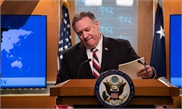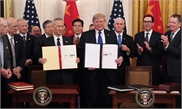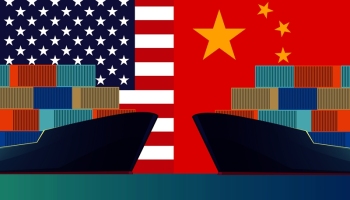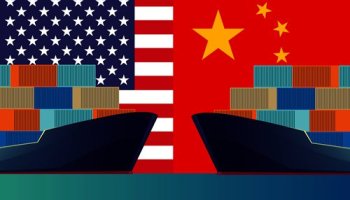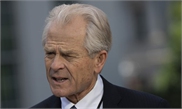Check the latest update:
https://www.bloomberg.com/graphics/2020-coronavirus-cases-world-map/
https://www.bloomberg.com/graphics/2020-coronavirus-cases-world-map/
Mapping the Coronavirus Outbreak Across the World
> https://youtu.be/kVV4udIphcM
https://youtu.be/IRkXhR4SiIQ
https://youtu.be/OIvAmcQtdF0
https://youtu.be/KnI9c4_xu8w
Why white nationalists hear a political ally in Donald Trump
https://youtu.be/n4RLVuDD-AE
https://youtu.be/YOngQERR9tE

Related posts:
Viral diplomatic wars: Trump’s labelling of Covid-19 as a ‘Chinese virus’ earlier this month has infuriated Beijing and ethnic Chinese w..
https://youtu.be/Pucoeb2KKOQ How China can end US rivalry and realise its vision of a shared future for humanity, as the world struggl.
https://youtu.be/DPt-zXn05ac
https://youtu.be/yL26-EW7ZW4
https://www.bloomberg.com/graphics/2020-coronavirus-cases-world-map/
https://www.bloomberg.com/graphics/2020-coronavirus-cases-world-map/
Mapping the Coronavirus Outbreak Across the World
> https://youtu.be/kVV4udIphcM
https://youtu.be/IRkXhR4SiIQ
https://youtu.be/OIvAmcQtdF0
https://youtu.be/KnI9c4_xu8w
Why white nationalists hear a political ally in Donald Trump
https://youtu.be/n4RLVuDD-AE
https://youtu.be/YOngQERR9tE
Trump attacks journalists for asking 'snarky' questions on coronavirus testing in US
With the novel coronavirus spreading around the globe, a political virus with deeper influence has also begun to show up. In recent years, white nationalism and white supremacy have been on the rise, a perfect reflection of a political virus that is spreading in the US. If Washington cannot appropriately deal with this virus, it will not be able to make the US great again but rather see an irreversible decline and fall of the US empire.
As of Tuesday, the US has reported at least 163,000 cases of COVID-19 and over 3,000 deaths from the virus. These fast rising numbers have failed to sober some US politicians, especially those who are anti-China, who regard the virus as an opportunity to expand their political interests.
The US is in a political mess with different forces striving to gain an upper hand in a game of political competition. The far-right forces represented by former Trump White House strategist Stephen K. Bannon have been on the frontline and haven't missed an opportunity to attract attention with extreme rhetoric.
Bannon has said that the Chinese government is "an existential threat to the Chinese people and to the world, not just the US." This is a typical statement aimed at gaining political support by pitting China and the world against each other. People like Bannon are actually spokespersons for white nationalism and white supremacy, and they label China an enemy to realize their political goals. These people have fanned the flames of extreme nationalism, which will cause the US to suffer first.
US history shows us that the country needs an enemy to push its development. This is pathetic, yet white nationalists still attempt to unite Americans by making up an enemy. The enemy used to be the Soviet Union, and now it's China, even though today's China is nothing like the Soviet Union.
When the term "American Century" was coined in the 1940s, the US was urged to become the world's Good Samaritan and thus a leader across the globe. Hence, in the eyes of some US politicians obsessed with the extreme mind-set of ideological competition, China has been targeted as a thorn in the side of the US.
Such being the case, Bannon and his followers have spared no efforts to smear China. They will continue spreading their political virus in the hope of reaching their ultimate goal of overthrowing China. These people on the far fringe of US political debate view this as the easiest way to make the US great again.
However, they know it's not possible for them to overturn the Chinese government, but they can't let go their paranoia. Therefore, they won't even hesitate to fulfill their self-gratification even if it drags the US into a hostility confrontation or even a war against China. In the era of globalization, the US will definitely harm itself and its people if it launches a cold war with China.
Nonetheless, if this racism-related political virus continues spreading and more people are deceived by extreme speech, the US will see its existing lesions develop into a malignant tumor. If that occurs, it won't only be the vast innocent Americans who will suffer, but also the politicians who care only about their political interests.
Read more :
Coronavirus pandemic accelerated as West’s sense of superiority caused failure to act promptly and lies about China
The West is trying to deflect blame, exacerbated by a mind-set which interprets disease outbreaks not as an inevitable aspect of the human condition, but something belonging to exotic, oriental and poorer nations.US, UK politicians can't twist virus public opinion
It is absurd to accuse China of a disinformation campaign or attempt to hold China accountable. And this cannot and will not stop US and British societies from digging out the real reason and criticizing those who made them suffer the pandemic.

Anti-China chorus can't mask country's contributions to virus fight
The US and some other Western countries have been recently launching continuous public opinion attacks on China from changing perspectives. They accused China of concealing data on the number of COVID-19 infections and deaths, politicized disputes over the quality of certain medical supplies shipped from China to the West, threw mud at China's diplomacy and demanded China be held accountable for the coronavirus outbreak, as if they are in tune with a new anti-China chorus.Related posts:
Viral diplomatic wars: Trump’s labelling of Covid-19 as a ‘Chinese virus’ earlier this month has infuriated Beijing and ethnic Chinese w..
https://youtu.be/uR_LfkGwBG8 As readers will recall from the earlier article (above), Japanese and Taiwanese epidemiologists and pharma...
https://youtu.be/Y_dU2RCqWs4 FORCED TO SHUT DOWN WHEN VIRUSES LEAKED AUGUST 2019 US SOLDIERS WERE INFECTED 300 HUNDRED CAM...
https://youtu.be/Pucoeb2KKOQ How China can end US rivalry and realise its vision of a shared future for humanity, as the world struggl.
'We lied, we cheated, we stole', ‘the Glory of American experiment’ by US Secretary of State/Ex-CIA director Mike Pompeo
https://youtu.be/DPt-zXn05ac








